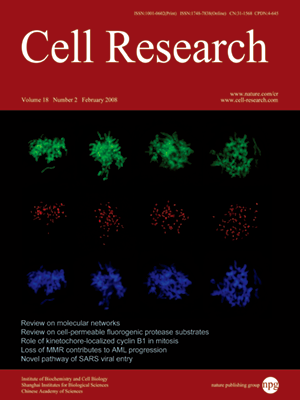
Volume 18, No 2, Feb 2008
ISSN: 1001-0602
EISSN: 1748-7838 2018
impact factor 17.848*
(Clarivate Analytics, 2019)
Volume 18 Issue 2, February 2008: 248-253
REVIEWS
Wnt signaling control of bone cell apoptosis
Peter V N Bodine
Women's Health and Musculoskeletal Biology, Wyeth Research, Collegeville, Pennsylvania 19426, USA
Correspondence: Peter V N Bodine(bodinep@wyeth.com )
Wnts are a large family of growth factors that mediate essential biological processes like embryogenesis, morphogenesis and organogenesis. These proteins also play a role in oncogenesis, and they regulate apoptosis in many tissues. Wnts bind to a membrane receptor complex comprised of a frizzled (FZD) G-protein-coupled receptor and a low-density lipoprotein (LDL) receptor-related protein (LRP). The formation of this ligand-receptor complex initiates a number of signaling cascades that include the canonical/beta-catenin pathway as well as several noncanonical pathways. In recent years, canonical Wnt signaling has been reported to play a significant role in the control of bone formation. Clinical studies have found that mutations in LRP-5 are associated with reduced bone mineral density (BMD) and fractures. Investigations of knockout and transgenic mouse models of Wnt pathway components have shown that canonical Wnt signaling modulates most aspects of osteoblast physiology including proliferation, differentiation, function and apoptosis. Transgenic mice expressing a gain of function mutant of LRP-5 in bone, or mice lacking the Wnt antagonist secreted frizzled-related protein-1, exhibit elevated BMD and suppressed osteoblast apoptosis. In addition, preclinical studies with pharmacologic compounds such as those that inhibit glycogen synthase kinase-3 support the importance of the canonical Wnt pathway in modulation of bone formation and osteoblast apoptosis.
Cell Research (2008) 18:248-253. doi: 10.1038/cr.2008.13; published online 22 January 2008
FULL TEXT | PDF
Browse 1812


